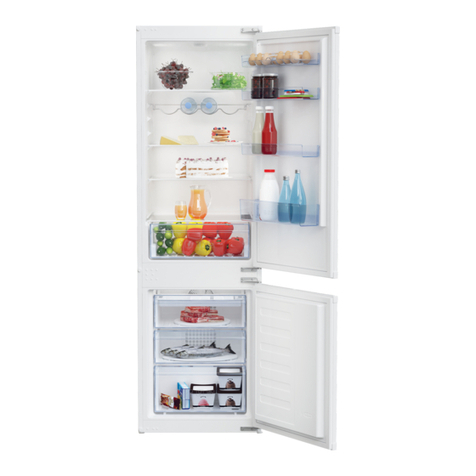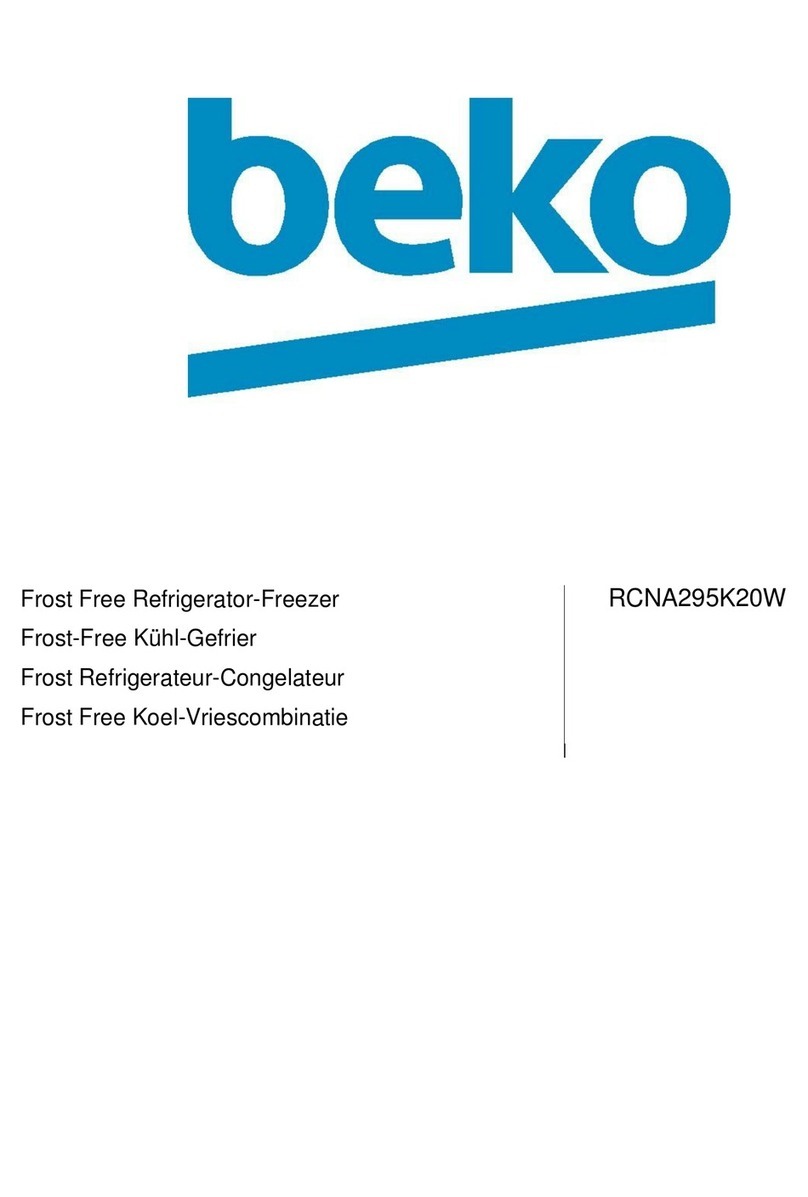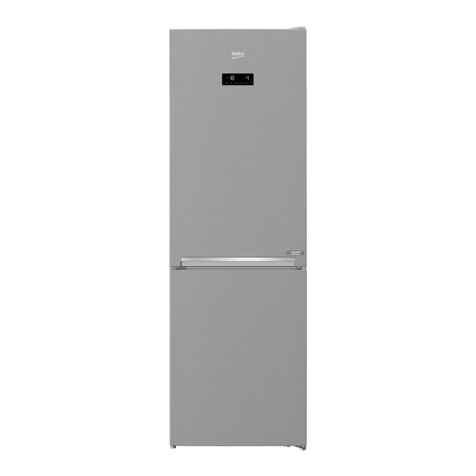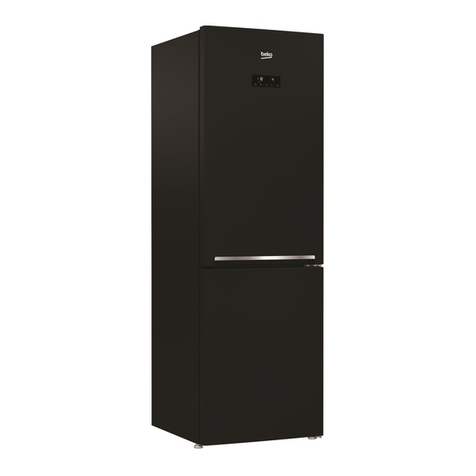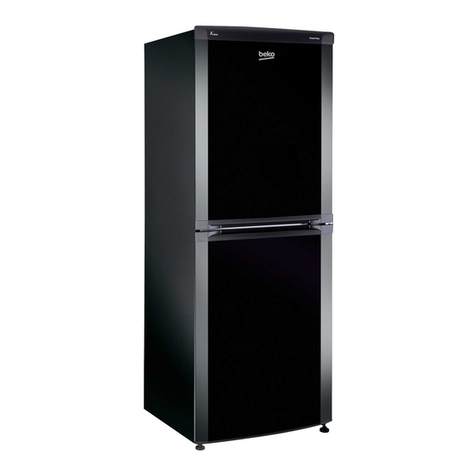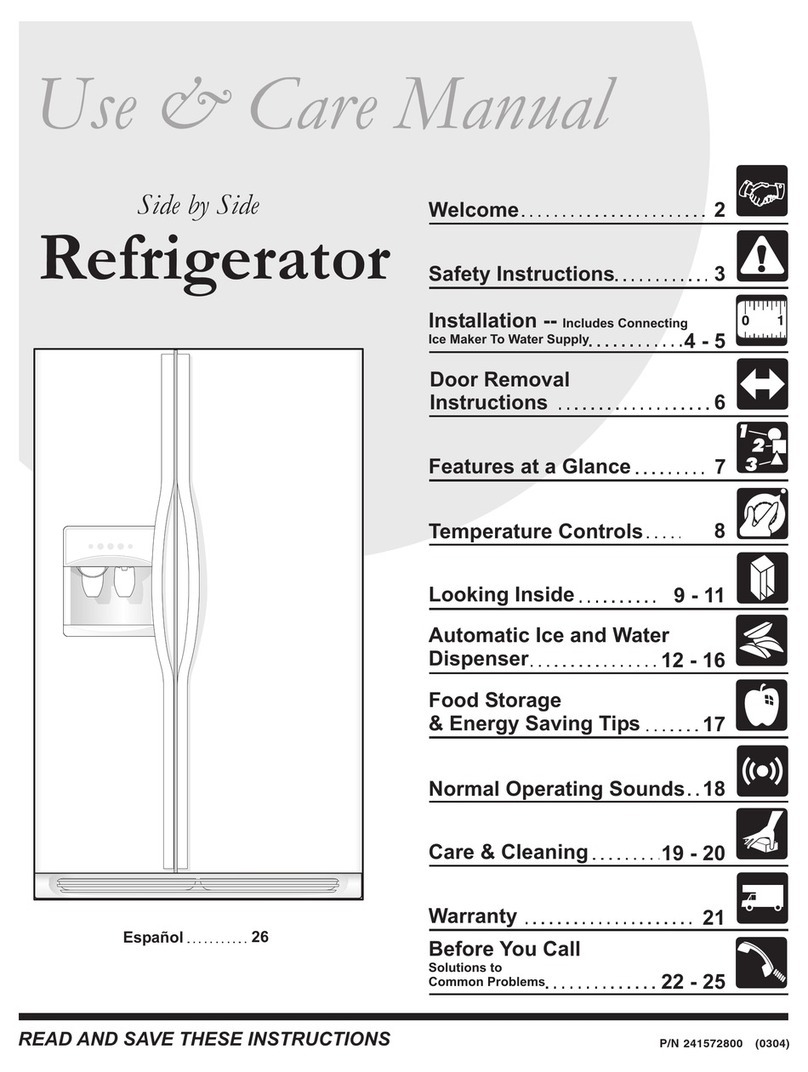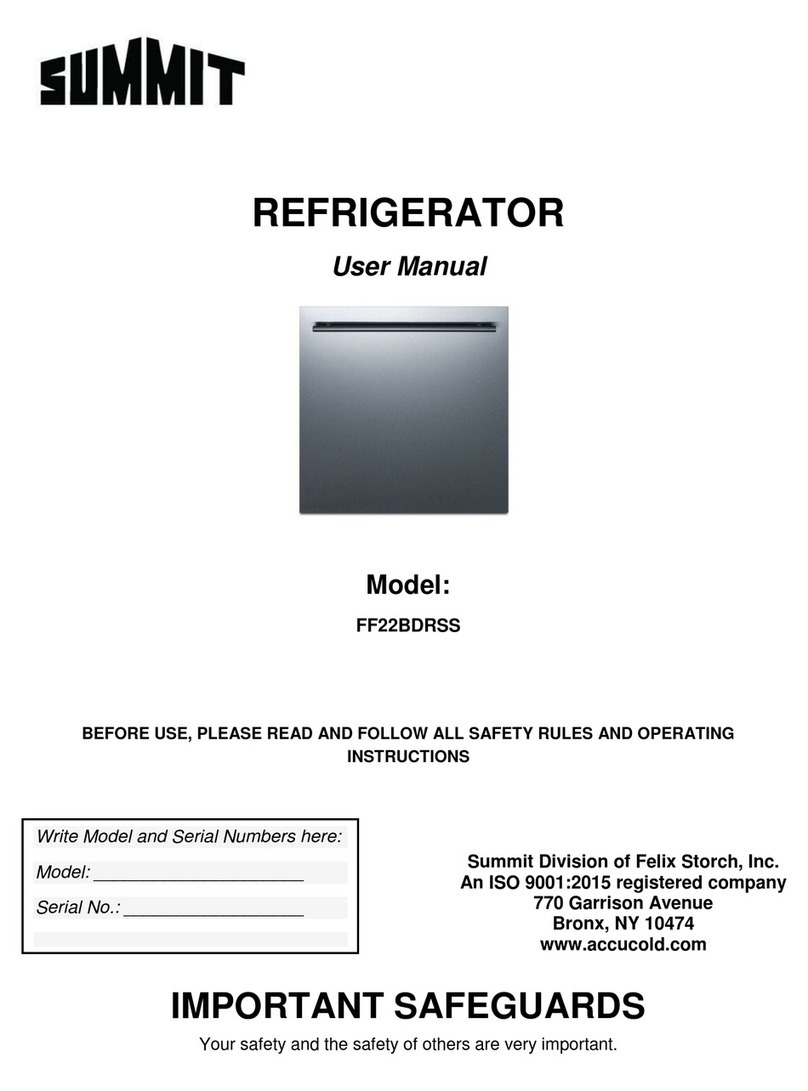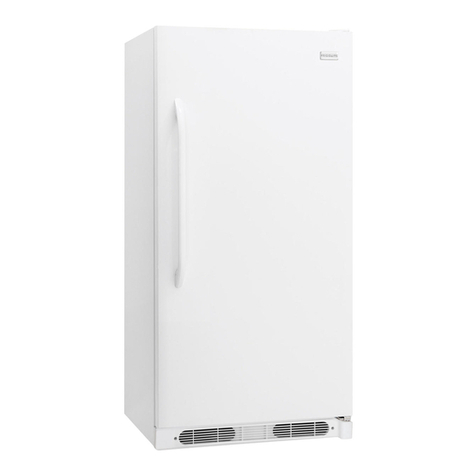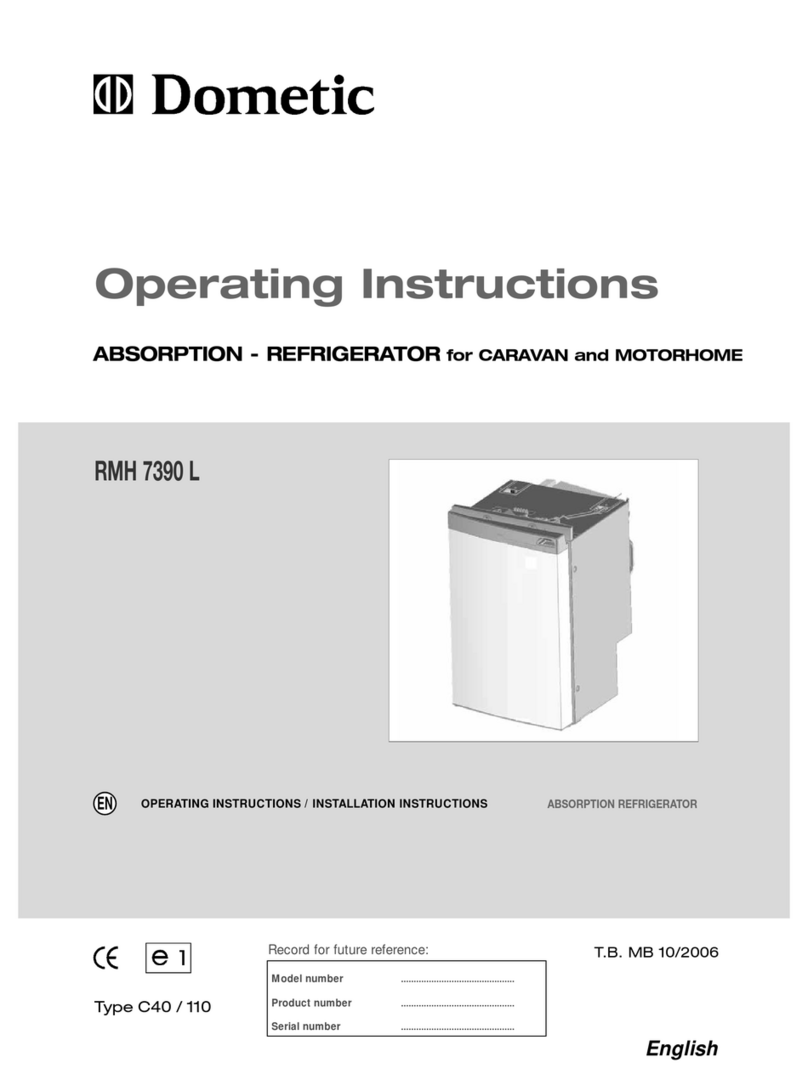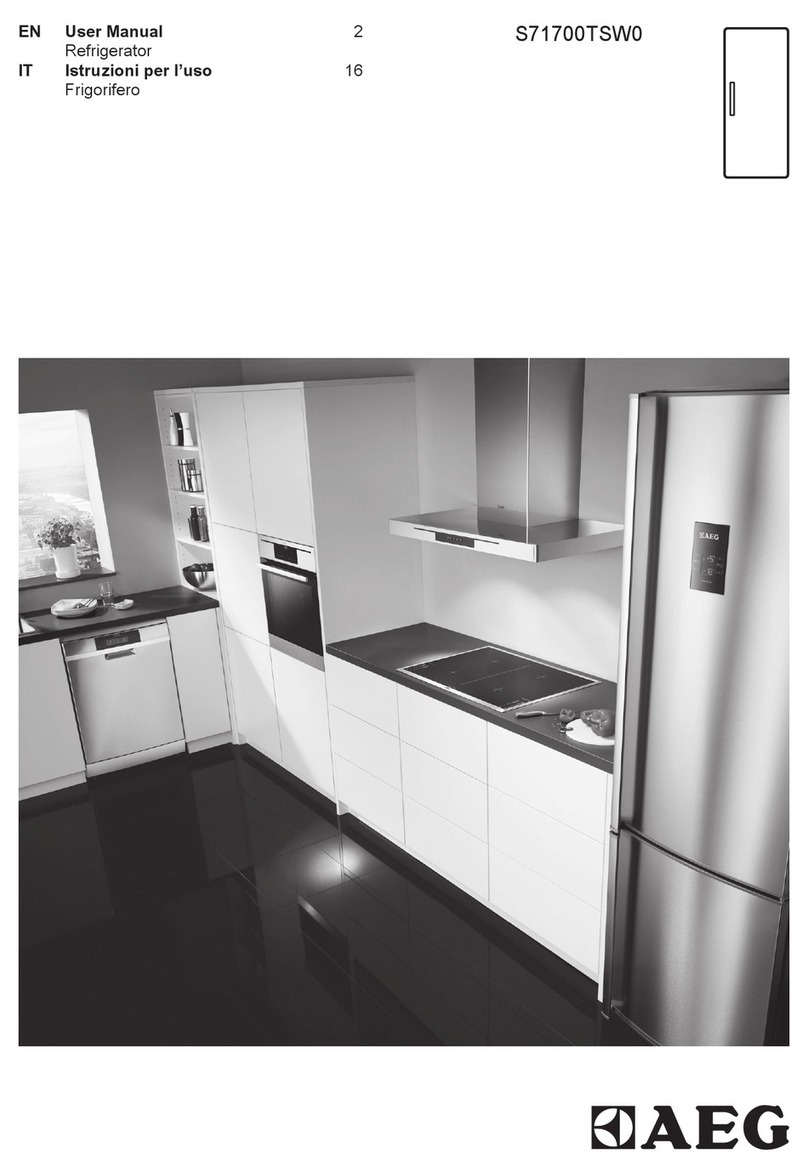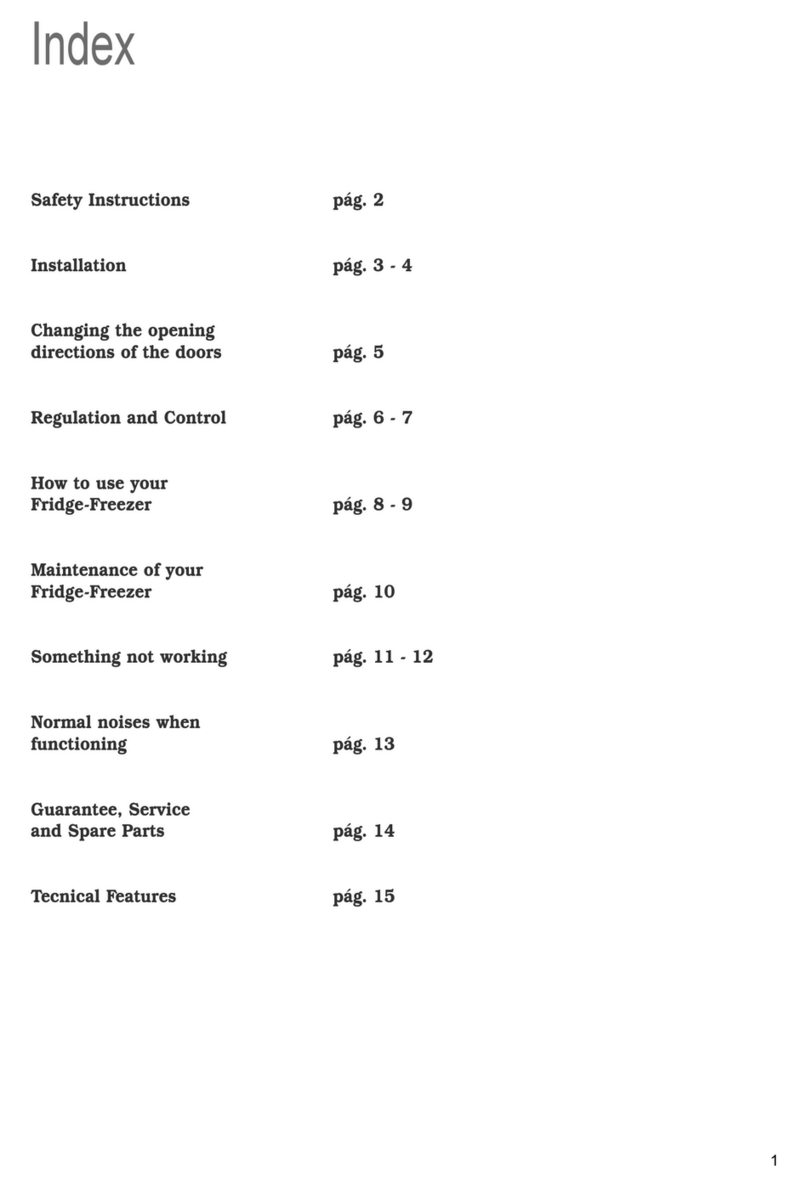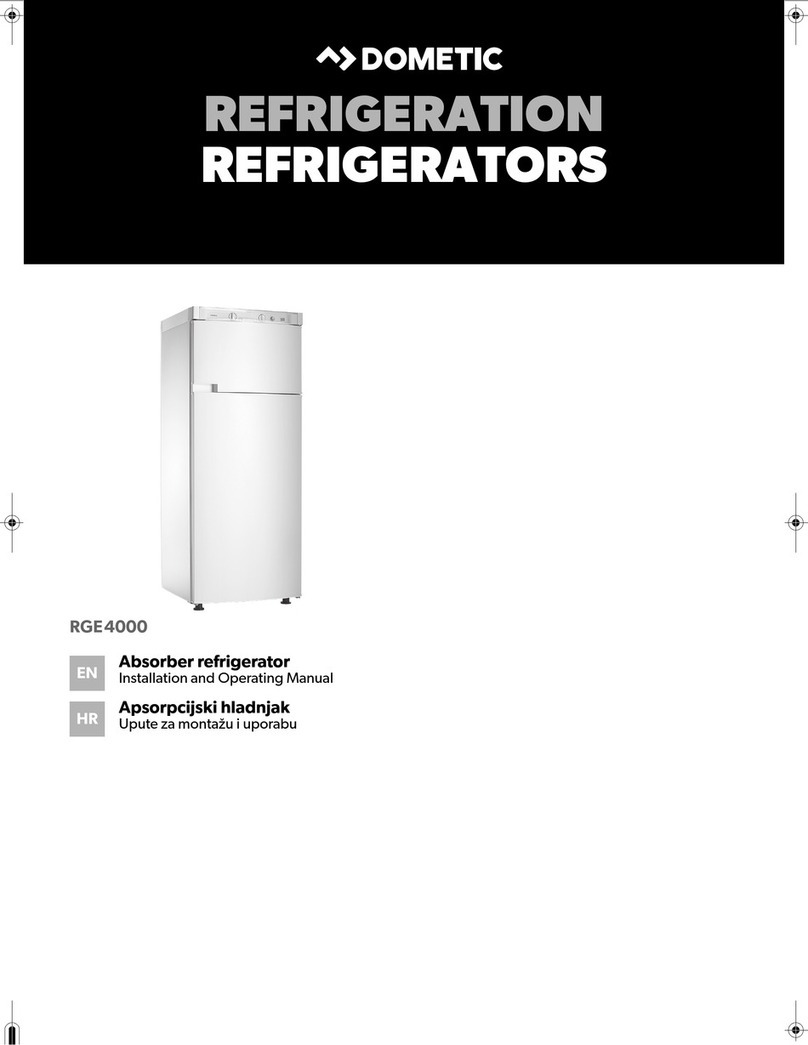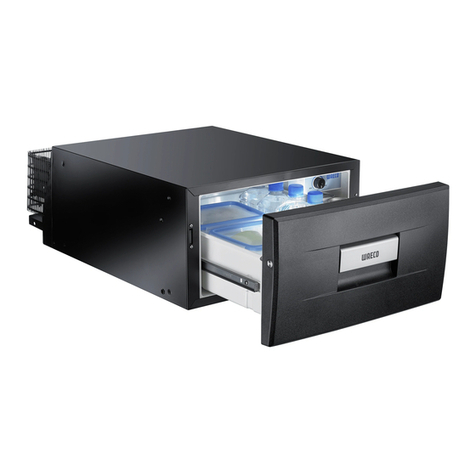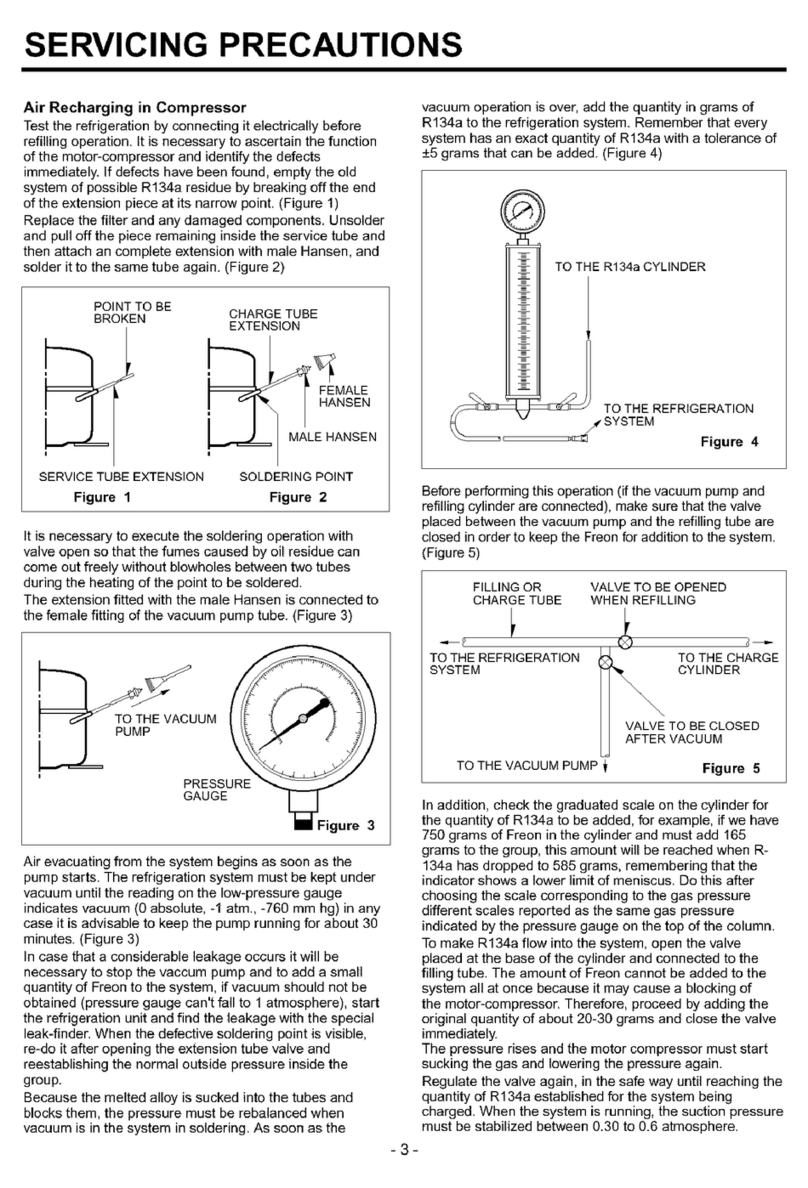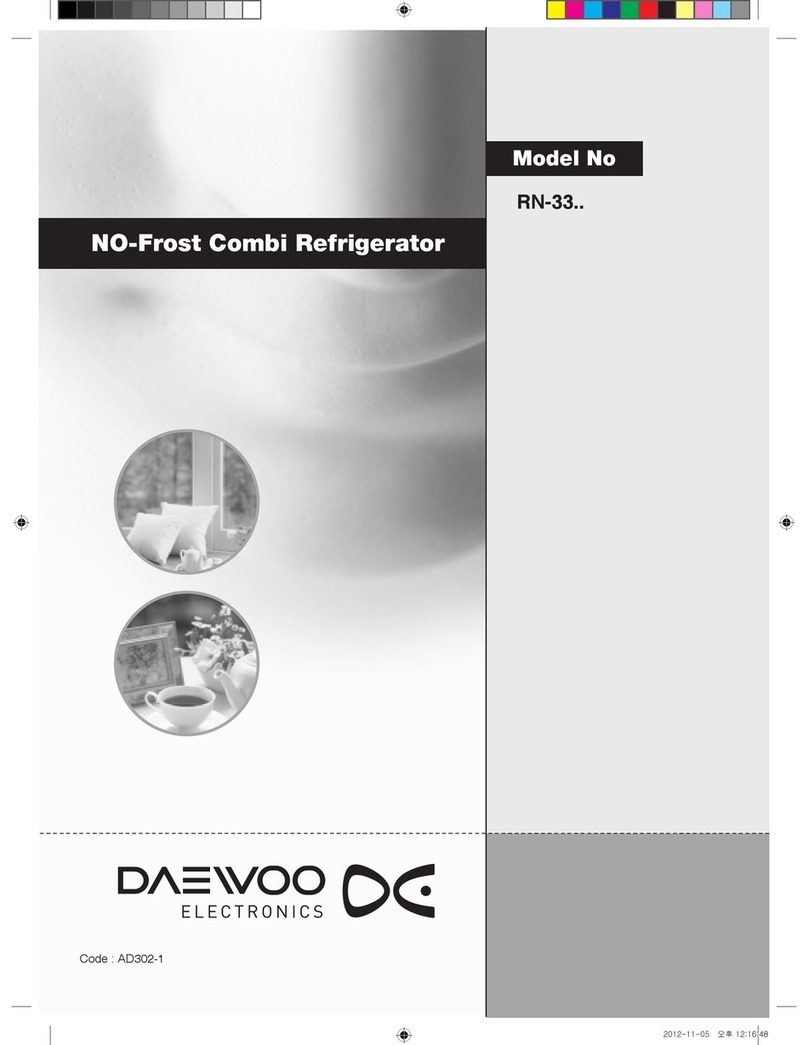
EN
10
• Extension cables and multi plugs
must not be used for connection.
BA damaged power cable must be
replaced by a qualified electrician.
BProduct must not be operated before
it is repaired! There is the risk of
electric shock!
Disposing of the packaging
The packing materials may be
dangerous for children. Keep the
packing materials out of the reach
of children or dispose of them by
classifying them in accordance with the
waste instructions stated by your local
authorities. Do not throw away with
regular house waste, throw away on
packaging pick up spots designated by
the local authorities.
The packing of your refrigerator is
produced from recyclable materials.
Disposing of your old
refrigerator
Dispose of your old refrigerator without
giving any harm to the environment.
• You may consult your authorized
dealer or waste collection center of
your municipality about the disposal
of your refrigerator.
Before disposing of your refrigerator,
cut out the electric plug and, if there
are any locks on the door, make them
inoperable in order to protect children
against any danger.
Placing and Installation
AIf the entrance door of the room
where the refrigerator will be installed is
not wide enough for the refrigerator to
pass through, then call the authorized
service to have them remove the doors
of your refrigerator and pass it sideways
through the door.
1. Install your refrigerator to a
place that allows ease of use.
2. Keep your refrigerator away
from heat sources, humid places and
direct sunlight.
3. There must be appropriate air
ventilation around your refrigerator in
order to achieve an efficient operation.
If the refrigerator is to be placed in a
recess in the wall, there must be at
least 5 cm distance with the ceiling
and at least 5 cm with the wall. Do not
place your product on the materials
such as rug or carpet.
4. Place your refrigerator on an
even floor surface to prevent jolts.
5. Your product requires adequate
air circulation to function efficiently. If
the product will be placed in an alcove,
remember to leave at least 5 cm
clearance between the product and
the ceiling, rear wall and the side walls.
6. If the product will be placed in
an alcove, remember to leave at least
5 cm clearance between the product
and the ceiling, rear wall and the side
walls. Check if the rear wall clearance
protection component is present at its
location (if provided with the product).
If the component is not available, or if
it is lost or fallen, position the product
so that at least 5 cm clearance shall
be left between the rear surface of the
product and the wall of the room. The
clearance at the rear is important for
efficient operation of the product.




